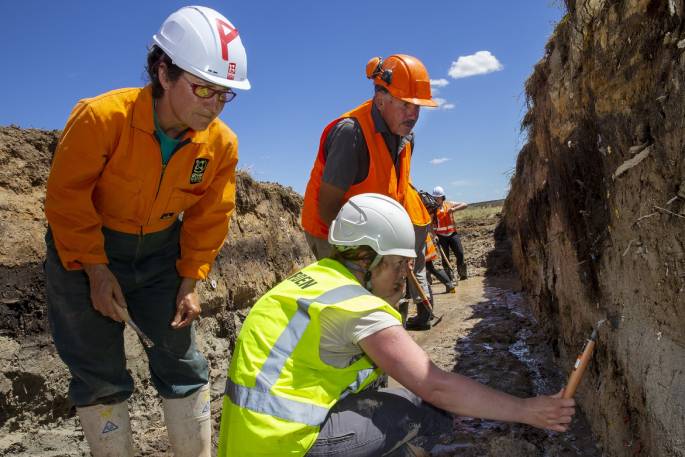New research is aiming to ascertain the earthquake risk posed by a recently discovered Waikato fault.
Thanks to improved aerial mapping tools, scientists recently discovered the Te Puninga fault, 27km from Hamilton.
GNS Science experts have embarked on a research project to determine the risk the fault poses.
This is part of an effort to better understand quake risk in parts of New Zealand that are traditionally seen as safe from quakes.
Dr Pilar Villamor, an earthquake geologist at GNS Science, is heading up a project funded by the Earthquake Commission, to study the fault, about 3km from Morrinsville. EQC invests $17 million each year in scientific research and data to reduce the impact of natural hazards on people and property.
'If it ruptured, Morrinsville would potentially experience the same level of shaking Christchurch had during the 2010 Darfield quake,” Dr Villamor says, suggesting researchers estimate the fault could generate a 6.7 magnitude earthquake based on its length of 25km. 'It would be relatively strong in Hamilton as well.”
Dr Villamor's team are digging trenches across the fault to expose soil layers displaced in previous earthquakes over the past 20,000 years and take samples from each layer. The samples will be dated by experts at the University of Waikato and in Spain.
'This will tell us how often the fault has ruptured, and the magnitude of the quakes it has produced.
'That information in turn will help us to understand the risk of future earthquakes in the area and how to prepare for that risk,” says Dr Villamor.
Earthquake Commission research manager Dr Natalie Balfour says that the research is extremely important for the communities in the Hauraki Plains, which has traditionally been considered a low seismicity area, not unlike the Canterbury region before 2010.
'We're funding this project and similar work in other parts of the country to get a much better idea of the risk in areas that New Zealanders generally think of as safe from earthquakes,” says Dr Balfour.
'Research shows us that many of these areas have had large earthquakes in the past, and detailed historic data will help understand what could happen in future.
'This will help communities make decisions about how to be better prepared for future events.”
Dr Villamor is grateful to the local community for their support to enable the team to do this research, including local iwi Ngati Haua and Ngati Hako who have provided knowledge to the project, the Waikato Regional Council, and local land owners for access to their properties and permission to excavate the trenches.



0 comments
Leave a Comment
You must be logged in to make a comment.